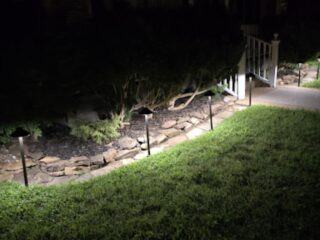
Imagine transforming a lifeless yard into a thriving sanctuary that not only elevates your home’s curb appeal but also serves as a testament to the beauty and resilience of nature. The journey from barren to bountiful is not just about planting seeds; it’s about crafting a space that offers personal fulfillment and contributes positively to the environment.
Evaluating and Planning Your Garden Transformation
Every exceptional garden begins with a keen understanding of the land it will occupy. It is crucial to evaluate the quality of your yard’s soil, the amount of sunlight it receives, and its spatial dimensions. Such an initial assessment ensures your garden design is customized to embrace the unique features of your outdoor area, laying a robust foundation for your vision to flourish.
In the realm of garden design, meticulous planning takes center stage.
Choosing a garden style that truly speaks to you, whether a verdant vegetable patch or a serene floral retreat, dictates the course of your endeavor. This stage is about marrying inspiration with the practicalities of your garden’s environment, steering your decisions from the overall layout to the specific plants that will populate your space.
Preparing the Canvas
Transforming your yard into a flourishing garden requires several foundational steps beyond digging and planting. It begins with enriching the soil to provide the best possible environment for plant growth, clearing away any debris that might hinder development, and setting up an efficient watering system to ensure plants receive the hydration they need.
Focusing on organic methods to boost soil health, such as composting and using natural fertilizers, sets the stage for your garden to thrive. This holistic approach to preparing your garden promotes vigorous growth from the very start and contributes to a more sustainable and eco-friendly outdoor space.
Selecting and Planting Your Garden
The essence of your garden is captured in the plant varieties you select, with choices tailored to your space’s unique climate, soil, and sunlight conditions, ensuring its flourishing. Native plants stand out for their low maintenance and resilience, seamlessly integrating with the local ecosystem and enhancing your garden’s natural beauty.
Yet, the process continues after plant selection. Proper garden cultivation begins with planting, employing precise techniques for embedding seeds or seedlings into the ground. This is followed by crucial initial care steps, such as providing adequate water and applying mulch.
Securing a reliable mulch supply and delivery service is essential, as mulch plays a critical role in retaining soil moisture, regulating temperature, and suppressing weed growth. These early efforts are indispensable in developing a garden that exhibits robust health and vibrates with life and color.
Personalizing Your Outdoor Space
A garden is a canvas that mirrors the gardener’s personality, transforming it into a vibrant extension of the home. By infusing your outdoor space with unique decorative accents, handpicking outdoor furniture that harmonizes with the garden’s aesthetic, and selecting distinctive planters that stand out, you elevate the garden beyond a mere plot of land.

These personalized touches metamorphose into a sanctuary where every corner and curve reflects your individuality and style. This transformation enhances the garden’s physical appearance and imbues it with a sense of belonging, making it a haven for relaxation and reflection.
Creating an Eco-Friendly Oasis
Highlighting sustainable gardening practices is crucial for reducing environmental impact and nurturing local wildlife. By embracing composting, opting for drought-tolerant plants, and avoiding chemical pesticides and fertilizers, you can cultivate a garden that’s not only eco-friendly but also supports biodiversity and ecological balance. This approach transforms your garden into a serene personal retreat and a sanctuary for native plants and animals.
Focusing on water conservation techniques is another essential aspect of sustainable gardening. Implementing efficient systems like drip irrigation, harvesting rainwater, and choosing plants that thrive on minimal water are key strategies for creating a garden that’s both beautiful and mindful of environmental responsibilities. A garden design prioritizes water efficiency to ensure your outdoor space remains vibrant and thriving, all while minimizing its ecological footprint.
Extending Your Garden’s Enjoyment
To extend your garden’s enjoyment across all seasons, consider a strategic selection of plants that bring color and life to your outdoor space year-round. Choosing various plants that bloom at different times ensures your garden remains a vibrant and engaging sanctuary regardless of the season. Incorporating evergreens adds constant greenery, while winter bloomers and seasonal annuals sprinkle color throughout the year, maintaining a lively atmosphere even in the chillier months.
Beyond the flora, consider enhancing your garden with outdoor living spaces, inviting relaxation and enjoyment. Adding dining patios, fire pits, or cozy seating nooks makes your garden more inviting and increases its functionality, turning it into an ideal setting for social gatherings or peaceful retreats. These elements work together to elevate the garden’s appeal, making it a captivating backdrop for various activities and ensuring its beauty is appreciated every season.
Conclusion
The transformation from a barren yard to a bountiful garden is a rewarding process that marries the art of gardening with the joy of creating beauty. You can cultivate a thriving space by carefully planning, selecting the right plants, and dedicating time to maintenance. Let this journey inspire you to embark on your gardening project, reminding you of the power of growth and fulfillment in connecting with the earth. Your flourishing garden awaits, ready to be shaped by your vision and effort.
Additional Resources
To further support your journey from transforming a barren yard into a flourishing garden, consider exploring these resources for additional insights and guidance:
- Soil Health and Preparation: The United States Department of Agriculture (USDA) offers comprehensive soil health guides, including soil testing and improvement tips. Their website is a valuable resource for understanding the basics of soil science in gardening.
- Plant Selection: The Lady Bird Johnson Wildflower Center’s Native Plant Database provides an extensive list of native plants suitable for various climates and garden settings. This resource can help you choose plants that are well-adapted to your local ecosystem.
- Sustainable Gardening: The National Wildlife Federation provides resources for creating wildlife-friendly gardens that support local biodiversity and offer habitats for pollinators and other wildlife.

These resources and tips in this guide are your allies in the gardening journey. They can help turn your garden into a thriving, year-round haven. Happy gardening!





